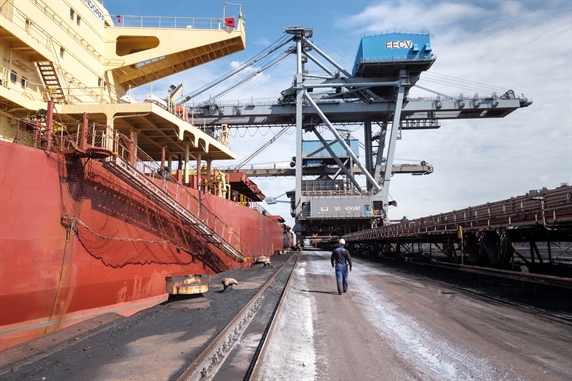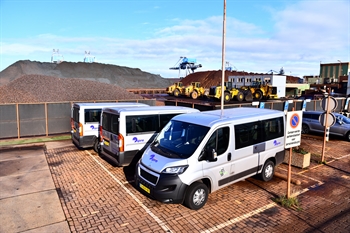Case study Vanpooling at Europoort Ore Transshipment Company (EECV)
Europoort Ore Transshipment Company (EECV), located in Rotterdam's Europoort, has been providing commuter transport for its employees for years by means of 'vanpooling', in which its personnel drive to work together in small vans. There are now 38 vans used by some 270 employees according to a fixed timetable. In this way, the company prevents everyone from taking their own car.
Because EECV employees mostly work in shifts, they often work until very early or very late. These working hours, in combination with EECV's remote location, make it impossible for employees to travel to work by public transport. From the point of view of sustainability and cost, EECV wants to prevent all of its employees from using their own car. That's why the company has been organising joint transport for its employees for years.
Before the company switched to small nine-seater vans, coaches were used. However, this method of collective transport was not ideal because of indirect routes, with many bus stops, often far from homes, leading to long travel times. As a result, employees often prefered their own car to the bus, resulting in empty (but extremely expensive) buses.
It was time for EECV to make a change. The large coaches were replaced by small vans with a capacity of up to nine passengers. Currently, the company has 38 vans, each with its own timetable. According to the route, employees are asked to act as drivers. The drivers are then given a nine-seater van to take home, which they use to pick up various colleagues on the way to work and drop them off on the way home. In the case of EECV, drivers receive an expense allowance.

Implementation
To organise vanpooling, EECV works together with Vipre (an organisation specialising in tailor-made company transport), which delivers the vans and draws up the timetable based on the home addresses and working hours of the employees. The bus stops are no more than 600 metres from the employees' homes. Because of this tailored approach, the travel time by van is in many cases equal to or just a little bit longer than with their own car. In addition, EECV has an exemption from various road authorities in the region for driving on the bus lane. This often makes vanpooling in the rush-hour even faster than travelling with your own car. Moreover, EECV employees do not receive travel expenses, which makes using their own cars unattractive compared to the vanpool service, which is free of charge for employees.
When a new employee joins EECV, Vipre first looks to see if they can fit into the existing pool timetable. If this is not the case, Vipre revises the timetable by adding the address of the new employee. The company tries to extend the travel time of current employees as little as possible. All employees receive the timetable on paper and can also find it on the Vipre site. In the event of changes, EECV involves the transport committee of the works council and also actively communicates the changes to the employees.
Results
Currently, some 270 employees of EECV travel to and from work by vans. Their experiences are generally positive. They enjoy travelling together and are more often on time. Moreover, EECV does a lot to guarantee the reliability of the service. For example, EECV organises a replacement when a driver is absent and if a colleague has to work overtime, the company arranges for them to drive with someone else or take a taxi home. In order to continue to ensure satisfaction, regular consultations are held with Vipre and the transport committee of the works council of EECV.
For EECV, there is a financial benefit: vanpooling is cheaper than the previously used coaches and also less expensive than when everyone comes to work with their own car. In addition, EECV contributes to reduced emissions of exhaust gases. Employees who do not work shifts (and therefore have different working hours) are provided with an (electric) lease car. Here, too, the company focuses on driving together (carpooling) so that employees travel from A to B as sustainably and efficiently as possible.
Considerations for deployment elsewhere
The following points apply to the deployment of vanpooling:
- For a good timetable and filled vans, it is important that employees have approximately equal working hours. Therefore, vanpooling lends itself well to companies working with shifts, especially since these people often work until very early or very late when regular public transport does not run.
- Involve the works council at an early stage. This helps create support and the knowledge that they contribute can help to achieve an optimal timetable
- For companies that are located close to each other (and have roughly equal working hours), it may pay off to adopt vanpooling together in order to fine-tune the networks for an optimal timetable.
- Provide an alternative if an employee is unable to take the van (e.g. due to overtime). Then employees will know that they can get home, which benefits the reliability of the service and the satisfaction of the employees.
- Consider abolishing the travel allowance for commuting by car. This push factor makes vanpooling even more attractive.

